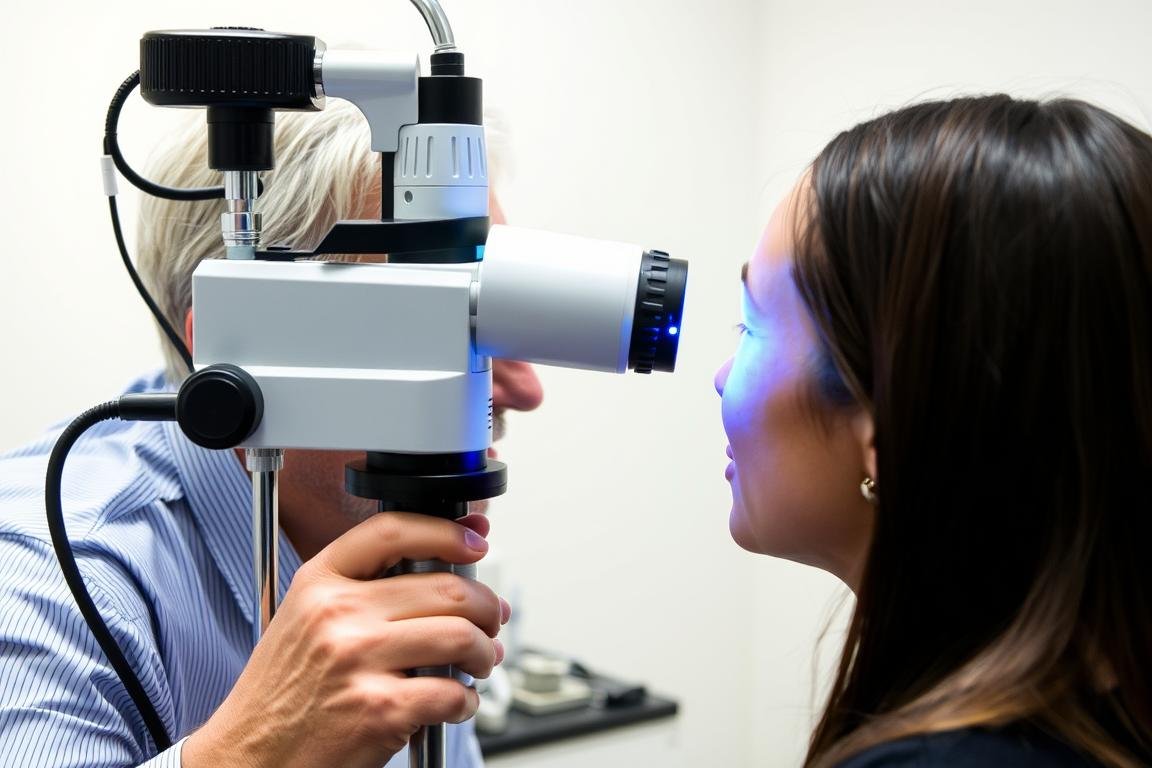The human iris—the colored part of your eye—has fascinated health practitioners for centuries. Beyond its beauty, some believe it contains a map of your entire body’s health. Iridologists are practitioners who study the patterns, colors, and characteristics of the iris to identify potential health concerns. While conventional medicine remains skeptical, iridology has gained popularity as an alternative assessment method. This guide explores what iridologists do, how they practice, and what you should know before considering an iris reading.
What Is an Iridologist and How Do They Practice?
An iridologist is a practitioner who specializes in examining the iris of the eye to assess a person’s health status. Rather than diagnosing specific diseases, iridologists identify areas of potential weakness or stress in the body. They believe that each section of the iris corresponds to different organs and body systems, creating a detailed map that reflects your overall health.

An iridologist conducting an iris examination using specialized magnification equipment
During a typical session, an iridologist will use specialized tools to examine your iris in detail. They look for specific markings, color variations, and patterns that they believe indicate the condition of corresponding body parts. After the examination, they provide an assessment of potential health concerns and may suggest lifestyle changes, dietary adjustments, or supplements to address these issues.
It’s important to note that iridologists do not claim to diagnose medical conditions. Instead, they identify areas of concern that might benefit from attention. Many iridologists recommend that clients also work with conventional medical doctors, especially for serious health concerns.
Core Principles Behind Iris Analysis
Iridology is based on several fundamental principles that guide how practitioners interpret what they see in the iris. Understanding these principles helps explain how an iridologist approaches their practice.
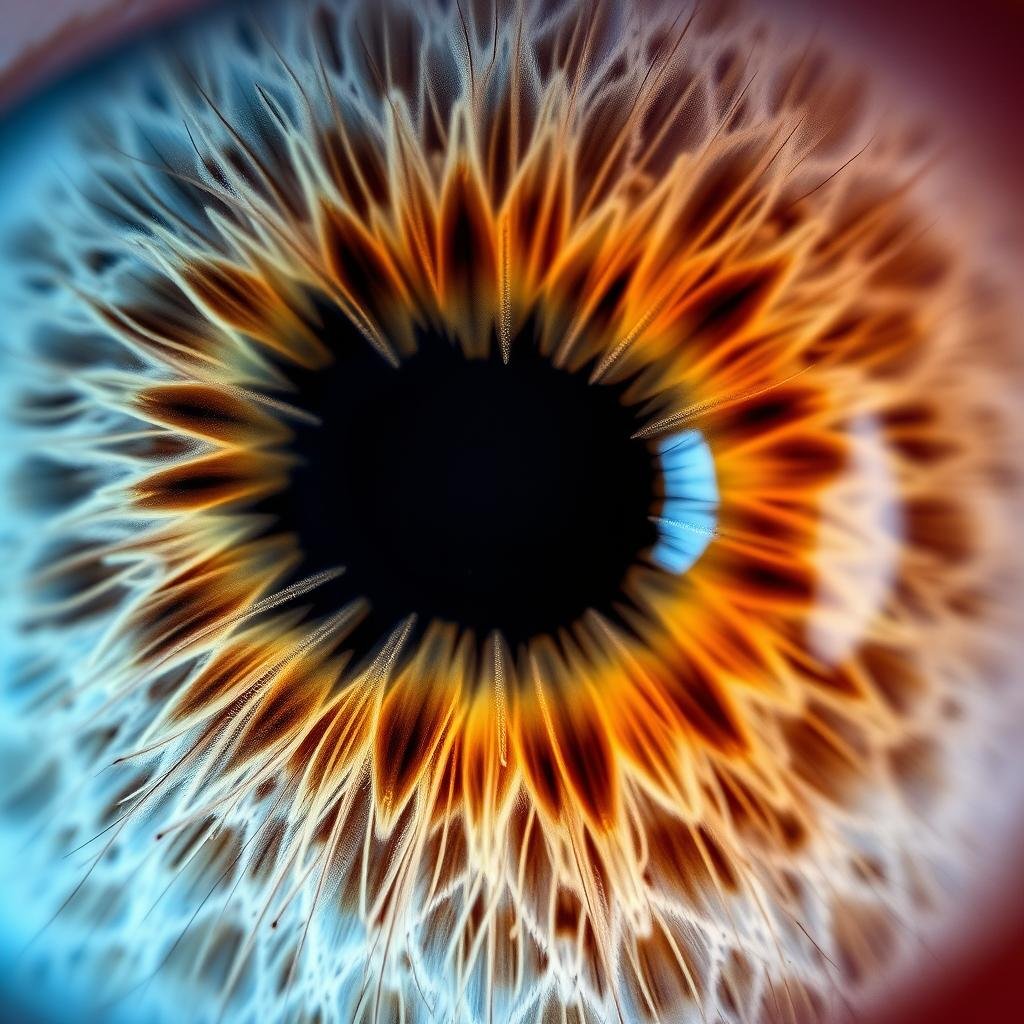
Detailed view of iris fibers and patterns studied by iridologists
Iris Fiber Structure
Iridologists examine the iris fibers—the tiny thread-like structures that radiate from the pupil. They believe that breaks, separations, or unusual patterns in these fibers indicate tissue damage or weakness in corresponding body areas. Dense, evenly distributed fibers are considered signs of good health, while sparse or damaged fibers may suggest potential problems.
Color Analysis
The color of the iris and any variations within it are significant to iridologists. They analyze both the base color and any spots, clouds, or discolorations. For example, a yellowish tint might suggest liver or gallbladder issues, while white areas could indicate inflammation or acidity in specific body regions.



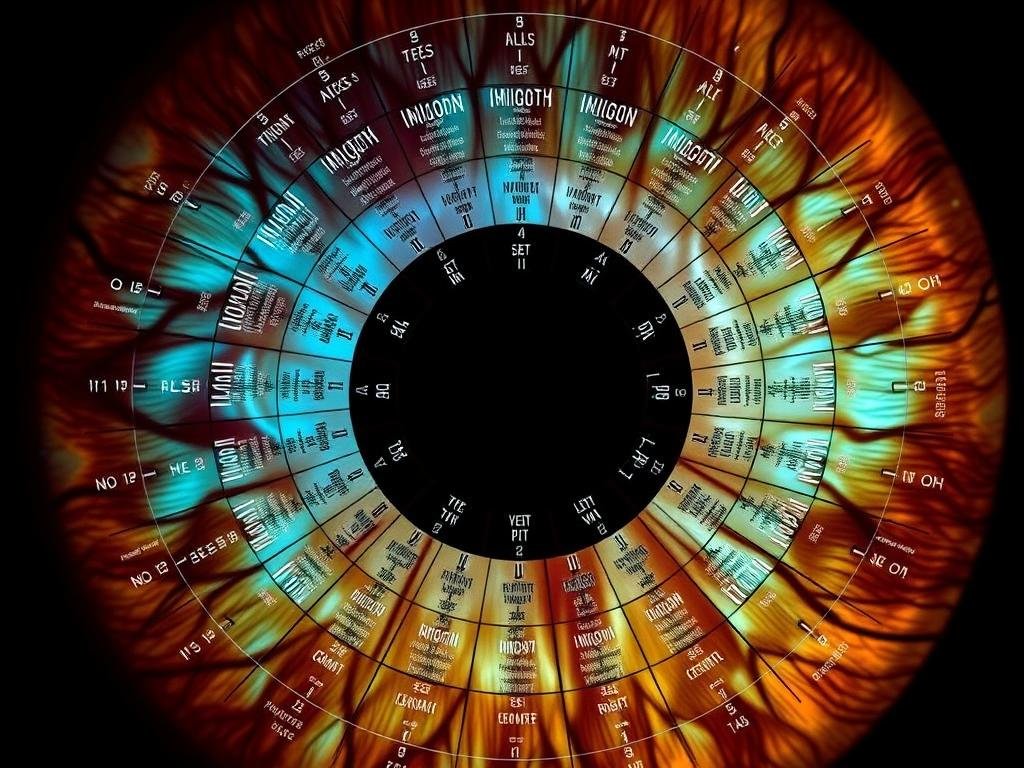
Iridology chart mapping iris zones to corresponding body organs and systems
Iris Zones and Mapping
Iridologists use charts that divide the iris into approximately 60 zones, each corresponding to different parts of the body. The left iris is believed to represent the left side of the body, while the right iris corresponds to the right side. These maps guide practitioners in identifying which body systems might be affected based on where markings appear in the iris.
Constitutional Assessment
Iridologists believe they can determine a person’s inherent strengths and weaknesses—their constitutional makeup—by examining the iris. This assessment helps identify areas that may require special attention or support to maintain optimal health.
Training and Certification for Iridologists
Unlike medical doctors or optometrists, iridologists don’t have a standardized licensing system in most countries. However, several paths exist for those seeking to become qualified practitioners.

Students in an iridology certification program learning analysis techniques
Educational Pathways
Those interested in becoming an iridologist typically pursue one of these educational routes:
- Certificate programs through holistic health schools (typically 100-200 hours)
- Diploma courses from specialized iridology institutes
- Mentorship with established practitioners
- Continuing education for healthcare professionals (naturopaths, chiropractors, etc.)
Professional Organizations
Several organizations provide certification and continuing education for iridologists:
- International Iridology Practitioners Association (IIPA)
- National Iridology Research Association (NIRA)
- Guild of Naturopathic Iridologists (GNI)
- Canadian Institute of Iridology
These organizations typically require members to complete approved training programs, pass examinations, and participate in continuing education to maintain certification.

Professional certifications and credentials displayed in an iridologist’s office
Complementary Education
Many iridologists enhance their practice with additional training in:
- Nutrition and dietary therapy
- Herbal medicine
- Anatomy and physiology
- Other natural healing modalities
Conditions Iridologists Claim to Identify
Iridologists believe they can identify various health conditions by examining specific signs in the iris. While scientific validation remains limited, practitioners report correlations between iris signs and these health concerns:
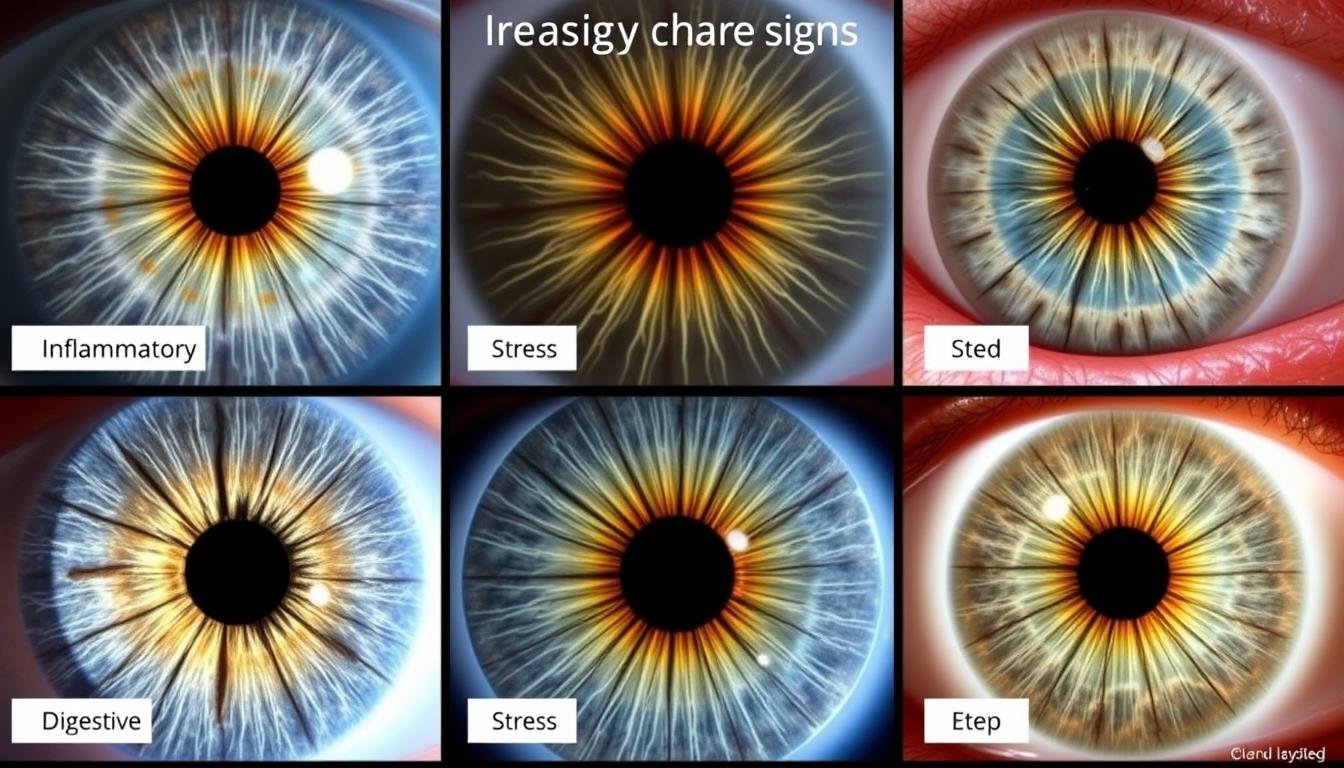
Comparison of different iris signs and their corresponding health indications in iridology
Digestive System Issues
Iridologists often identify digestive concerns through specific iris signs. Dark markings in the intestinal area of the iris chart may indicate inflammation, poor absorption, or irritable bowel conditions. Practitioners look for color changes, spots, or structural abnormalities in these zones to assess digestive health.
Inflammation and Stress Patterns
White fibers or “stress rings” in the iris are interpreted as signs of inflammation or tension in corresponding body areas. These markings may appear as concentric rings or radial lines and are believed to indicate chronic stress responses or inflammatory conditions that may benefit from anti-inflammatory approaches.
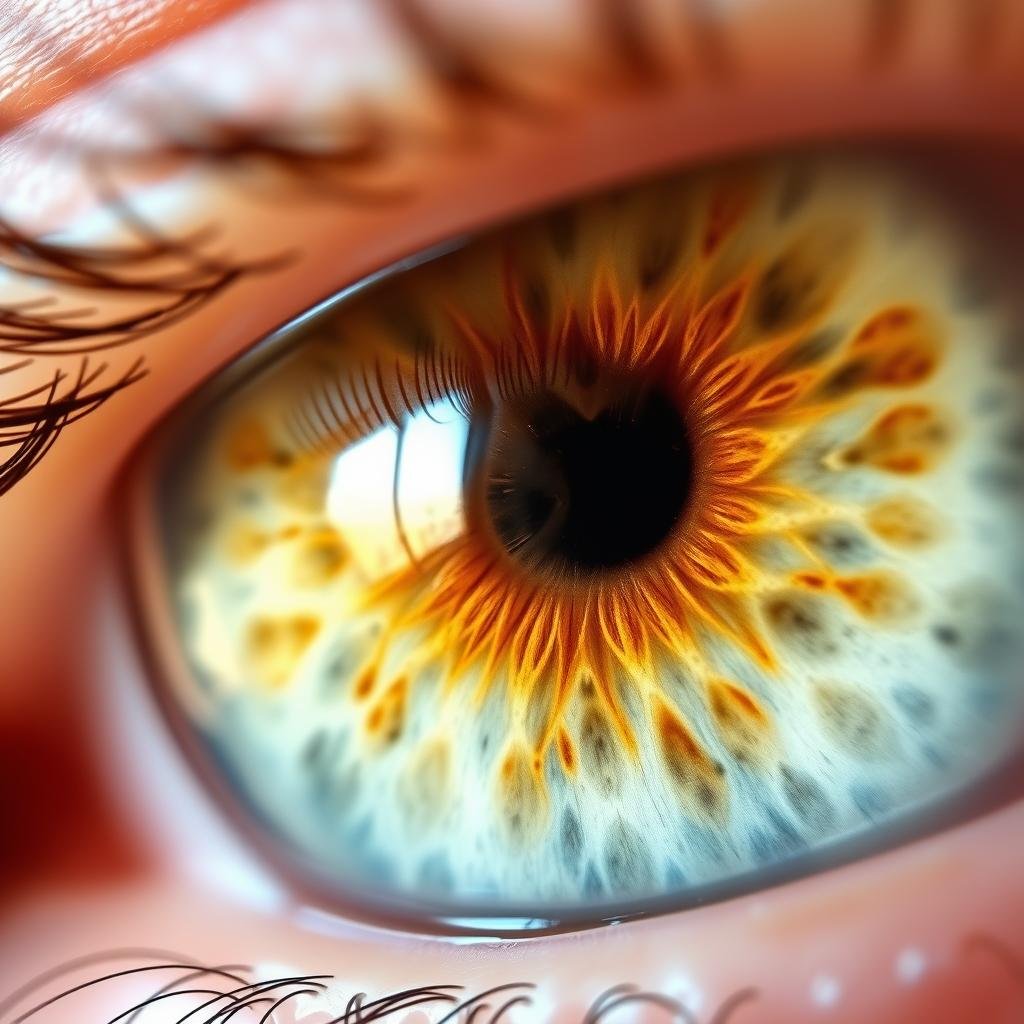
Iris signs that iridologists associate with liver function issues
Liver and Gallbladder Function
Yellowish discolorations or brown spots in specific iris zones are associated with liver or gallbladder dysfunction. Iridologists may suggest these indicate toxin accumulation, reduced detoxification capacity, or potential gallstone formation, leading to recommendations for liver-supporting herbs or dietary changes.
Lymphatic System Congestion
Cloudy or “murky” areas in the iris may be interpreted as signs of lymphatic congestion or poor waste elimination. These patterns are believed to indicate areas where the body’s natural detoxification processes may be compromised, potentially contributing to immune system challenges.
Cardiovascular Health
Certain markings in the heart and circulatory zones of the iris are associated with cardiovascular concerns. A pronounced ring around the iris (known as the sodium ring) is often linked to high blood pressure or mineral imbalances affecting heart function.
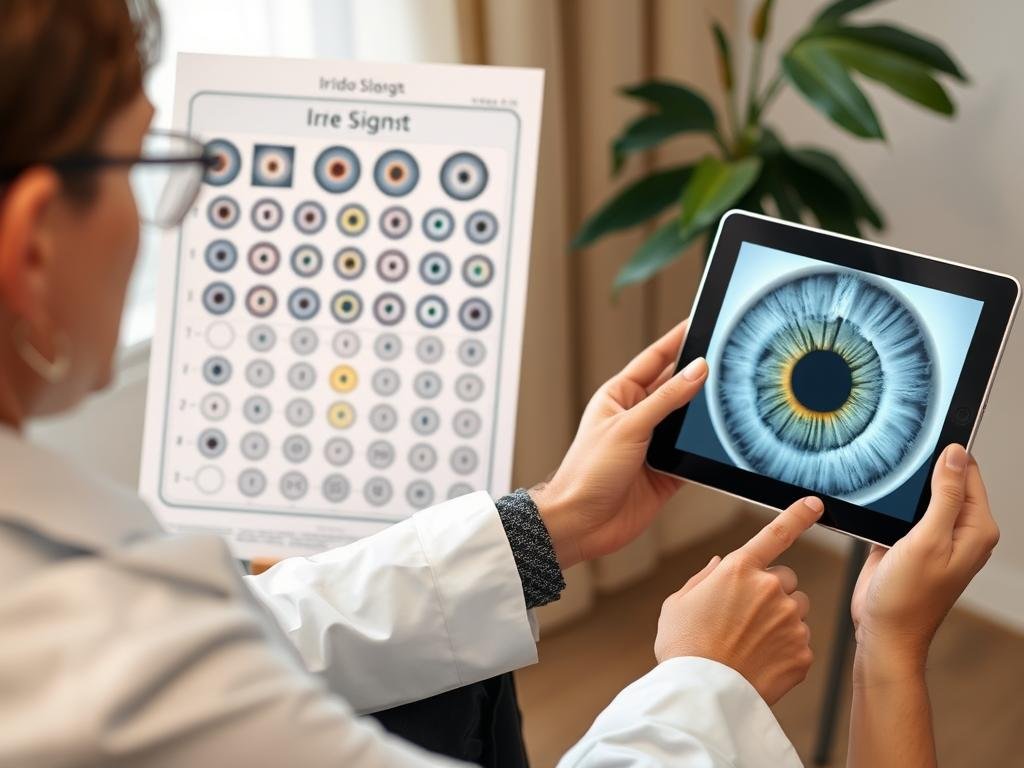
An iridologist explaining identified iris signs to a patient during a consultation
Nervous System Imbalances
Nerve rings or “stress rings” appearing as circular lines in the iris are interpreted as indicators of nervous system tension. These may be associated with anxiety, sleep disturbances, or autonomic nervous system imbalances that could benefit from stress-reduction techniques.
Hormonal Imbalances
Changes in specific iris zones corresponding to endocrine glands may suggest hormonal imbalances. Practitioners look for color variations, structural changes, or markings in areas associated with the thyroid, adrenals, or reproductive organs to identify potential hormonal issues.
Pros and Cons of Iridology
Like any health assessment method, iridology has both potential benefits and limitations. Understanding these can help you decide whether this approach might be valuable for your health journey.
Potential Benefits of Iridology
- Non-invasive assessment: Iridology examinations involve no needles, blood draws, or uncomfortable procedures.
- Holistic perspective: Considers the interconnectedness of body systems rather than isolating symptoms.
- Preventive approach: May identify areas of weakness before symptoms develop, allowing for proactive health measures.
- Complementary tool: Can work alongside conventional medicine to provide additional insights about health patterns.
Limitations and Concerns
- Limited scientific validation: Few peer-reviewed studies support the effectiveness of iridology in accurately identifying health conditions.
- Inconsistent interpretations: Different iridology systems may provide conflicting analyses of the same iris.
- Not a diagnostic tool: Cannot definitively diagnose medical conditions or replace proper medical testing.
- Potential for delayed treatment: Relying solely on iridology might delay seeking appropriate medical care for serious conditions.

An integrative approach: Patient discussing health with both an iridologist and a medical doctor
Frequently Asked Questions About Iridologists
Is iridology scientifically validated?
The scientific community generally does not recognize iridology as a validated diagnostic method. Several controlled studies have failed to demonstrate that iridologists can consistently identify health conditions through iris examination. A notable study published in the Journal of the American Medical Association found that iridologists could not reliably detect kidney disease by examining photographs of irises.
However, proponents argue that these studies often test diagnostic abilities rather than iridology’s intended purpose of identifying constitutional weaknesses and tendencies. Some preliminary research suggests potential correlations between certain iris features and specific health conditions, but more rigorous scientific investigation is needed.
How does iridology differ from optometry?
Optometrists are licensed healthcare professionals who examine, diagnose, and treat eye conditions and vision problems. They complete extensive medical training and can prescribe corrective lenses and medications. Their focus is specifically on eye health and vision.
Iridologists, by contrast, examine the iris not to assess eye health but to evaluate the condition of other body systems. They do not diagnose or treat eye conditions, prescribe corrective lenses, or perform eye surgeries. While optometrists use scientifically validated methods to assess vision and eye health, iridologists use alternative approaches that are not generally accepted in conventional medicine.
It’s important to note that eye health concerns should always be addressed by qualified eye care professionals such as optometrists or ophthalmologists, not iridologists.
How much does an iridology session typically cost?
The cost of an iridology session varies widely depending on the practitioner’s experience, location, and the depth of the assessment. Initial consultations typically range from to 0, with follow-up sessions often costing less. Some practitioners include iridology as part of a broader holistic health assessment, which may affect pricing.
Most health insurance plans do not cover iridology sessions as they are considered alternative or complementary approaches rather than conventional medical care.
Can iridology detect serious medical conditions?
Iridologists generally do not claim to diagnose specific diseases but rather identify areas of potential weakness or stress in the body. While some practitioners suggest they can see signs of serious conditions like cancer or heart disease in the iris, these claims are not supported by scientific evidence.
For serious health concerns, it’s essential to seek proper medical evaluation from qualified healthcare providers who can perform appropriate diagnostic tests. Iridology should not be used as a substitute for conventional medical diagnosis, especially for potentially life-threatening conditions.
Making Informed Decisions About Iridology
Iridology offers an intriguing perspective on health assessment through the examination of iris patterns. While many find value in this holistic approach, it’s important to maintain a balanced view of its capabilities and limitations. The practice continues to evolve, with some practitioners integrating modern technology and research to enhance their assessments.
If you’re considering consulting an iridologist, approach the experience with both an open mind and healthy skepticism. Look for practitioners with comprehensive training and professional certifications. Most importantly, view iridology as a potential complement to, rather than a replacement for, conventional healthcare.

Taking a balanced approach: Researching both conventional and alternative health perspectives
Whether you’re drawn to iridology out of curiosity or seeking additional insights about your health, remember that your well-being is best supported by a comprehensive approach that considers multiple perspectives and evidence-based practices.
Interested in Learning More About Eye Health?
Discover comprehensive eye care resources and find qualified professionals who can help you maintain optimal vision and eye health.
Explore Eye Health Resources



















